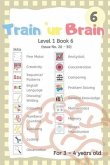This book is over 630 pages and covers all the Cambridge International AS & A Level syllabus, which includes; 1. Basic economic ideas and resource allocation 2. The price system and the microeconomy 3. Government microeconomic intervention 4. The macroeconomy 5. Government macroeconomic intervention 6. International economic issues Economics is an area of social studies that measure how people satisfy unlimited wants and needs with limited resources available. There are three levels of economics, namely: macroeconomics, microeconomics, and home economics. The science of economics combines and uses many other social studies. There are many standard themes of economics, including; Inflation: Recession: Gross Domestic Product Supply, Demand: Behaviour, and Utility theory. Production theory. Price theory. Prices rise. Interest, Markets. Capital: These are explained in the book. Microeconomics is the social science that studies the implications of incentives prices, resource prices and production methods, and decisions, specifically how those affect the utilisation and distribution of resources. The microeconomic theory deals with four crucial issues at an individual; What should be produced? How much should it be produced? How can one make the best use of given resources while producing goods and services to maximise production and consumption efficiency or maximise the returns for an individual (firm, industry, household etc.?. How the goods and services can be distributed for maximum well-being? Macroeconomic Macroeconomics is the branch of economics that deals with the structure, performance, behaviour, performance, and decision-making of an economy. It focuses on the aggregate changes in the economy, such as inflation, unemployment rate, national income, gross domestic product (GDP) growth rate, economic growth, Markets, business, consumers, government behaviour, and Price Level. Macroeconomics attempts to measure how well an economy is performing, understand what forces drive it, and project how performance can improve. The two main areas of macroeconomic research are long-term economic growth and shorter-term business cycles. >Macroeconomics Developed as a discipline in its own right in the 1930s when it became apparent that classic economic theory (derived from microeconomics) was only sometimes directly applicable to nationwide economic behaviour. Classic economic theory assumes that economies always return to a state of equilibrium. In essence, this means that if demand for a product increases, the prices for that product get higher and individual companies rise to meet the demand. However, during the Great Depression, there was low output and wide-scale unemployment. Clearly, this did not indicate equilibrium on a macroeconomic scale.. Macroeconomics helps a government evaluate an economy is performance and decide on actions to increase or slow growth. Macroeconomics is a field of study used to evaluate performance and develop actions that can positively affect an economy. Home economics, >
Bitte wählen Sie Ihr Anliegen aus.
Rechnungen
Retourenschein anfordern
Bestellstatus
Storno








